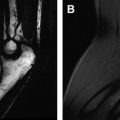
This issue on MR of the Wrist and Elbow takes a fresh look at the basics of imaging the ligaments, nerves, and vessels of the joints of the upper extremity as well as discusses more esoteric topics as the biomechanics of the elbow and wrist joints as it relates to imaging, both static and dynamic. Tumors, common and rare, and neurogenic and vascular conditions are discussed in detail. The issue is rounded out with an article by Drs de Mooij, Riester, and Kakar on the relevance of MR imaging of the wrist and elbow from a surgeon’s perspective, reminding us that as radiologists we do not work in a vacuum but rather contribute a critical element to patient care with high-quality, tailored exams that are then interpreted based on deep understanding of the clinical problems to be addressed. This collaboration of clinicians and radiologists has driven much of the evolution and progress of MR imaging in this area; it continues to drive innovation and development of new technologies, such as dynamic and kinematic imaging, to address complex clinical problems, such as carpal instability.
This expert team of authors has created a complete and expert set of works, and I am truly grateful for their efforts and contributions. I believe that this issue will serve as a source of information for radiologists and clinicians alike and that all readers, from trainees to the most expert subspecialists, will find something to learn here.
Stay updated, free articles. Join our Telegram channel

Full access? Get Clinical Tree





